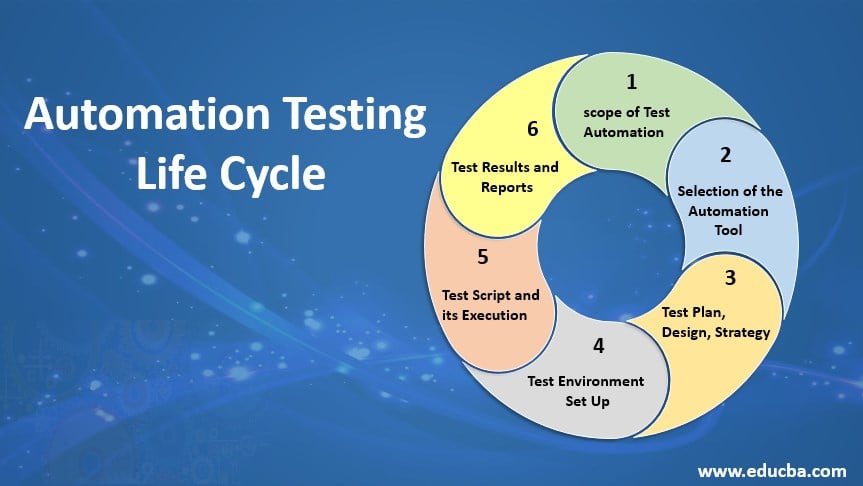Automation Testing: Key Steps to Improve Development Lifecycles
Automation Testing: Key Steps to Improve Development Lifecycles
Blog Article
Ensuring Success in Automation Checking: Key Metrics, Difficulties, and Solutions Every QA Group Ought To Know
In the world of software application high quality assurance, the landscape of automation testing is ever-evolving, demanding a precise method to make sure smooth operations. The journey to grasping automation testing is paved with nuances that need a keen eye for monitoring, analysis, and continuous renovation. As the sector pushes ahead, the quest for optimum efficiency in automation testing remains a constant search, prompting QA groups to furnish themselves with the expertise and approaches crucial for accomplishment.
Value of Key Metrics
Understanding the importance of essential metrics is vital for examining the performance and performance of automation screening processes. Key metrics act as quantifiable steps that provide beneficial understandings into numerous facets of the testing process, such as test protection, test implementation time, problem thickness, and test case performance. By evaluating these metrics, QA groups can determine traffic jams, inadequacies, and areas for improvement within their automation screening framework.
One essential facet of essential metrics is their capacity to track progress and keep an eye on the overall wellness of the screening procedure (automation testing). They allow stakeholders to make informed decisions based on data-driven understandings, which can result in extra effective screening strategies and much better source allotment. Additionally, essential metrics can aid teams established realistic objectives, determine the success of automation campaigns, and demonstrate the ROI of automation testing efforts

Usual Challenges Encountered
Obstacles frequently come across in automation testing procedures can substantially affect the general efficiency and performance of QA groups. One of the significant difficulties is the selection of the appropriate test cases for automation. Not all examination cases appropriate for automation, and picking the incorrect ones can bring about lost time and sources. Additionally, keeping test manuscripts can be an overwhelming task, specifically as the application undergoes regular changes. Examination script upkeep requires continual updates and modifications to guarantee they mirror the existing performance properly. One more usual challenge is the first financial investment required for establishing up automation frameworks and tools. This can be an obstacle for some organizations, particularly smaller sized ones with limited budget plans. Additionally, automation screening might not cover all aspects of screening, such as functionality and user experience testing, which still require manual treatment. Getting over these difficulties calls for proper preparation, tactical examination instance selection, robust upkeep procedures, adequate resources, and a clear understanding of the restrictions of automation screening.
Reliable Solutions for Challenges
To resolve the barriers run into in automation screening, carrying out efficient solutions is essential for improving the efficiency and performance of QA groups. One essential solution is to buy robust training programs for QA groups to ensure they have the needed skills to properly use automation tools. Training can link expertise voids, improve understanding of automation frameworks, and boost scripting abilities, ultimately bring about much more efficient test development and implementation.
One more vital option is to establish clear interaction channels within the QA team and with various other stakeholders, such as designers and project supervisors. Effective interaction helps in straightening expectations, sharing progression updates, and immediately dealing with concerns or obstructions that might arise throughout the automation testing procedure.

Tracking and Analysis Strategies
Implementing effective surveillance and analysis techniques is crucial for ensuring the success and performance of automation screening processes. By making use of surveillance tools, QA groups can track the performance of test manuscripts, determine bottlenecks, and pinpoint locations for enhancement. Real-time monitoring enables quick detection of concerns, making it possible for fast reaction and resolution. Additionally, assessing examination results and metrics provides beneficial understandings right into the quality of the software application being examined and the effectiveness of click this the testing approach.
One secret technique in tracking and evaluation is making use of dashboards that combine pertinent metrics and KPIs in an aesthetically obtainable layout. These dashboards provide a thorough overview of test execution standing, examination coverage, issue trends, and other important details. Frequently examining and assessing these dashboards can aid QA groups make notified choices, prioritize tasks, and enhance screening initiatives.
In addition, executing automated signals and notices based on predefined thresholds can improve aggressive surveillance and timely intervention. By establishing informs for performance discrepancies or examination failures, teams can deal with issues promptly and prevent them from escalating. In general, surveillance and analysis strategies play an essential duty in making certain the performance and success of automation screening efforts.
Constant Improvement Approaches
Enhancing the efficiency of automation testing procedures requires the regular improvement of strategies and methods. One crucial technique to enhancing automation testing procedures is to conduct routine testimonials and retrospectives.

Verdict
In final thought, it is important for QA teams to recognize the essential metrics, obstacles, and options in automation testing to make certain success. By meticulously monitoring and assessing data, implementing efficient solutions to typical challenges, and continually enhancing techniques, QA groups can optimize their screening processes and provide premium software items. Following these techniques will ultimately result in extra efficient and efficient automation screening practices.
By assessing these metrics, QA teams can recognize bottlenecks, ineffectiveness, and areas for renovation within their automation screening framework.
In addition, key metrics can assist groups established realistic objectives, measure the success of automation efforts, and show the ROI of automation screening efforts.
Difficulties generally encountered here in automation testing procedures can significantly impact the general effectiveness and performance of QA groups. Automation screening may not cover all elements of screening, such as usability and individual experience testing, which still call for manual intervention.In verdict, it is vital for QA groups to understand the crucial metrics, challenges, and remedies in automation testing to ensure success.
Report this page